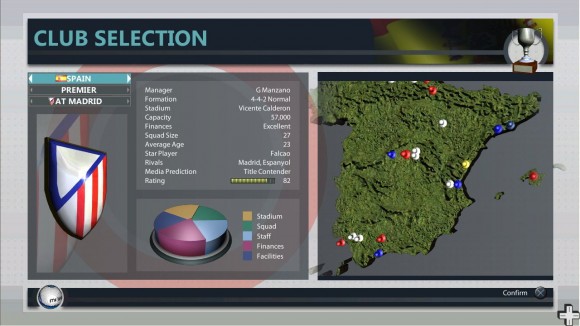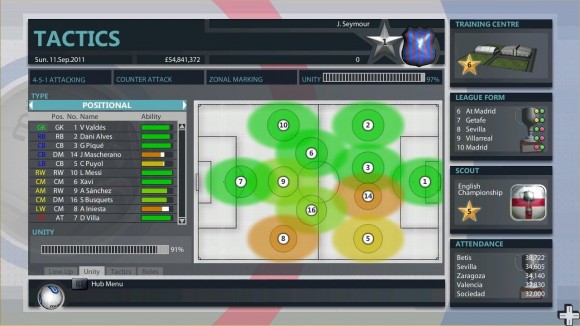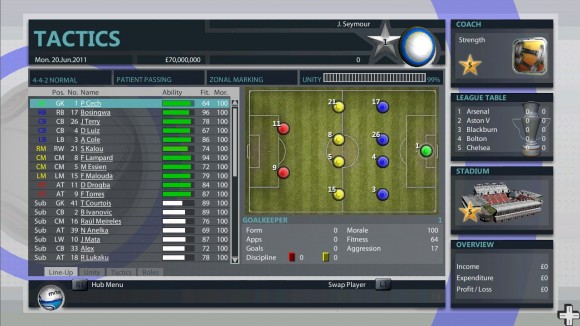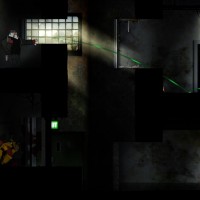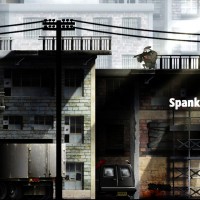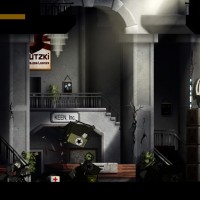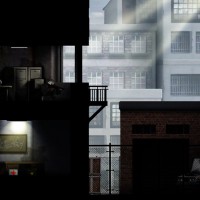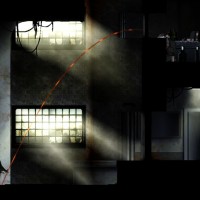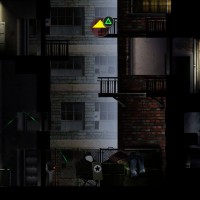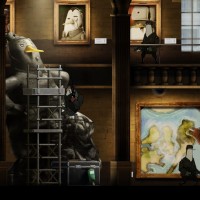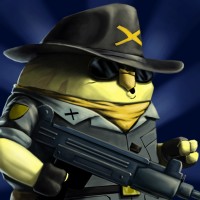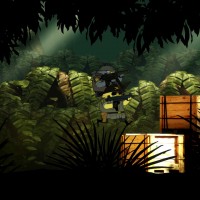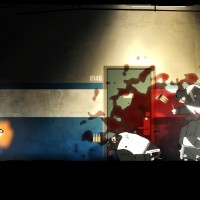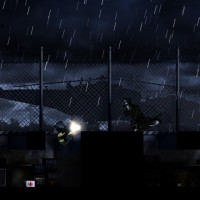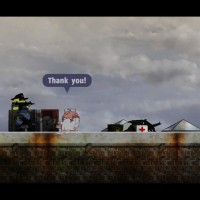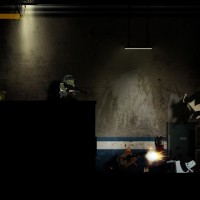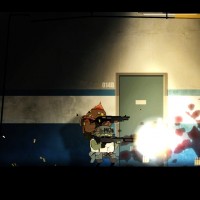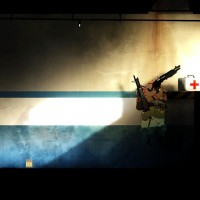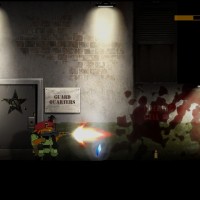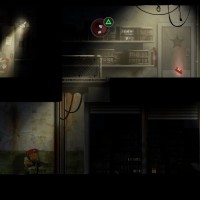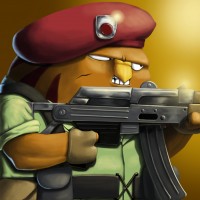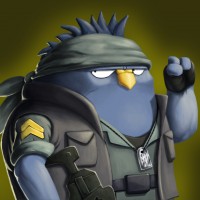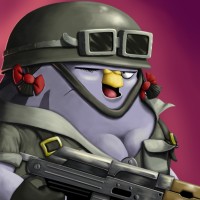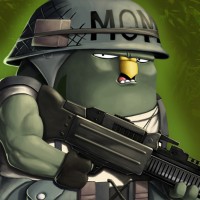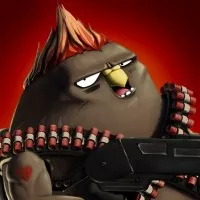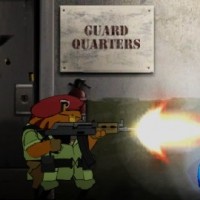Darksiders II

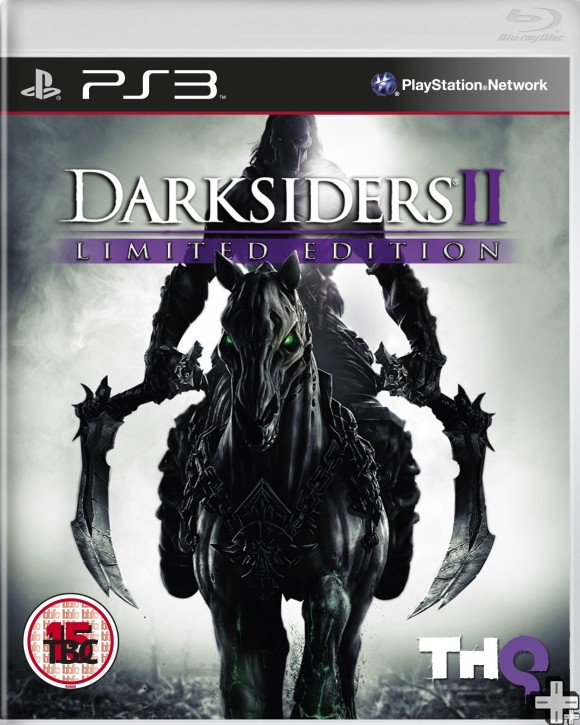
“Horsemen are drawing nearer, On leather steeds they ride, They’ve come to take your life,” and this particular Horseman is one you do not want to mess with. The Death that is created by THQ and Vigil games in Darksiders II is one not to mess with. He is not just a looming figure in the shadows, wearing a robe under which is a skeletal figure, oh no. This Death is a fully fleshed out demon, more mobile, wielding duel scythes and on a mission to prove his brothers innocence.
From the start of the game Death is on a rampage to get this matter resolved quickly. While the first level plays quickly to get the story moving, the rest of the game does settle down. Instead of being dictated by a constant narrative, Darksiders II is a stop-start affair with Death offering his services to the characters he meets, doing a mission or quest for them, then meeting someone else and repeating the process. This does lengthen the game time considerably but one feels either Death doesn’t really think much of his brother, or he is just distracted by shiny treasure.
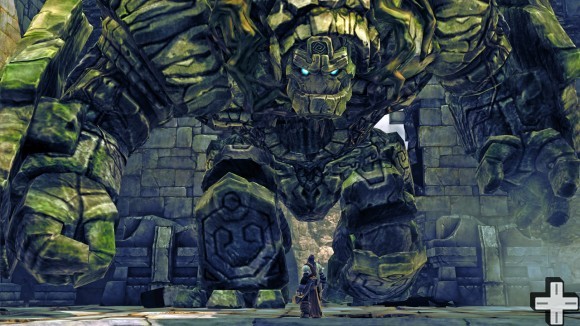
And there is a lot of treasure to be found. Every other enemy will spit out some form of currency or item that can be used by the Reaper, be it selling to merchants or even feeding them to his weapons for more powers, there is a lot of hoarding to be done. This can feel a little distracting as you could well find yourself fiddling with the over complicated menu system to upgrade Death’s boots rather than continuing with the job at hand.
If you do however decide to quest, you will find that the game is huge. Areas are up to three times the size of the original game, with a vast world map and large dungeons to conquer, this is by no means a small game. The large open areas do feel somewhat barren, as there is not much filling them save for a few baddies and a couple of treasure chests. Maybe this was done purposefully in order to show that Death himself is a lonely character with only himself and his horse for company, but whatever the reason it does come across as a little boring and the reason why the quick travel option is very welcome indeed.

Fighting the enemies in the game is where Death truly comes alive. The battle system is simple and effective to use and as the game progresses and Death levels up, more skills can be unlocked or purchased to grow the way he fights. Combos become easier to string together, which is a godsend when fighting groups of tough enemies, and of course the more baddies Death defeats, the stronger he will become. While the battle system is easy it feels like it has been done before in Devil May Cry. Death can even trigger a Reaper form that is stronger and more powerful than normal, sound familiar?
Similarities from other games do not stop there; the overall look of the game feels like Soul Reaver – a game from the PlayStation1 and later PS2 days where a vampire is on a mission to free himself and destroy his Lord and master. The quips that Death uses on a frequent basis, harks back to the familiarity of a game that came out some 13 years before.
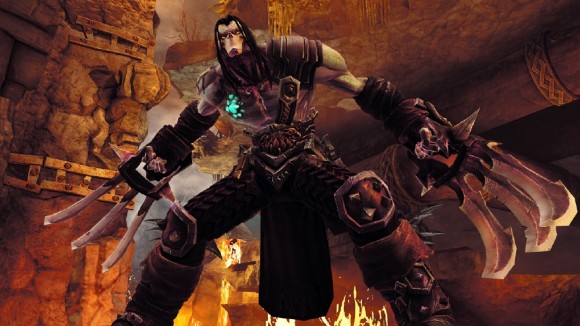
This is not necessarily a bad thing; Darksiders II may borrow the feel of other games, it certainly has its own good points to it. The combat is enjoyable; exploring the dungeons will always lead to rewards that will only improve Death in someway. The sheer amount of upgrades available is staggering, and even though it takes an eternity to level up, the skills that are unlocked are fun to watch unfold on the unsuspecting enemy. The length of the game is a good size and will have most adventuring for a while – even though getting from one place to another can be tedious.
Darksiders II may borrow from games of old but on its own Death is a step above his brother War with a majestic quest and tonnes of upgradeable options. The sequel is better than the original however; at times Darksiders II can be a little hollow and slow. If you prevail with the game it is a welcome addition to what surly will become an enjoyable series – after all we do have two more horsemen of the apocalypse with tales to tell.
LEGO Batman 2: DC Heroes

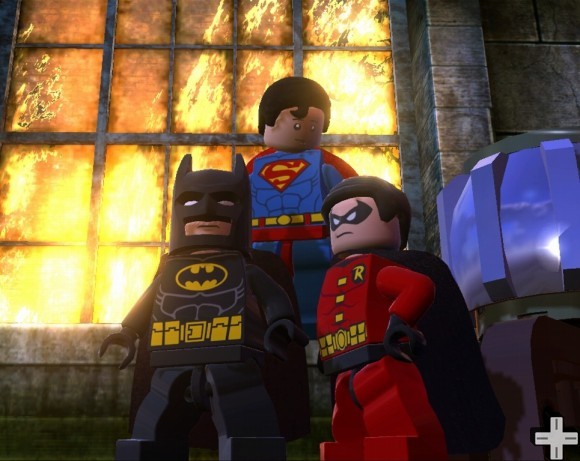
In the course of seven short years and numerous mash ups of classic movies and comics, the LEGO series of video games has accomplished what few games have managed – to create a series of games where the core objective remains the same and yet make it different so that players will still enjoy every different game.
Lego Batman 2: DC Heroes is no exception. The title, much like any other LEGO title is to get from point A to point B whilst collecting as many studs as possible and looking out for secret items and inhabitants in danger. However unlike previous LEGO games of yesteryear LEGO Batman is not based on any of the movies nor is it based on any particular comic book or even the Arkham series of games. This gives TT Games an effective blank canvas to make a unique game that is unlike any of the movie tie-in titles on show. Utilising this unique opportunity, they decided to tinker with the formula to craft something familiar and yet new at the same time. The first thing that stands out is when the game is loaded up, the normal mumblings of the Lego characters are gone, replaced instead with real voice acting.
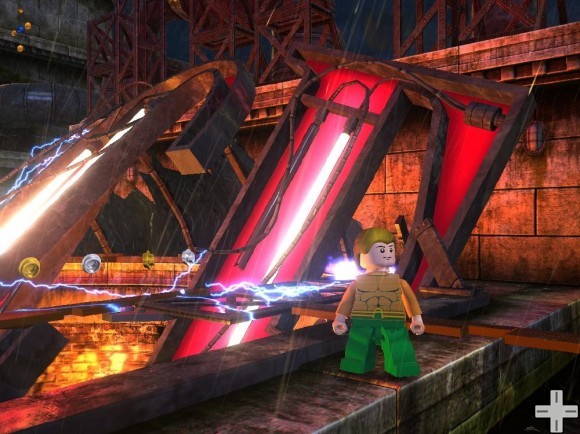
As shocking as it may seem with any LEGO game, the decision was made to dispose of the murmuring and tone
down the various slapstick expressions in favour of spoken jokes and a plot that is narrated to you, the player. This is a brave and well thought out move and it does pay off. Through the entire game players are treated with humorous banter between Batman and his various friends and foes, which would have been harder to pull off if they were to speak gobbledygook to one and other.
The plot of the game is simple enough and one that has been in place since the dawn of the DC comics – Batman must stop the Joker from destroying Gotham. However the clown has found a friend in one Lex Luthor. A somewhat reluctant Bruce Wayne calls upon Superman and other Justice League characters to battle against the newly formed partnership. For those not in the know, the Justice League is the DC equivalent or Marvel’s Avengers formed of Superman, Wonder Woman, Green Lantern, The Flash & Aquaman. Like other LEGO games, the entire League contributes their own individual powers into a massive list of playable characters that can eventually be used on any level to find hidden extras.
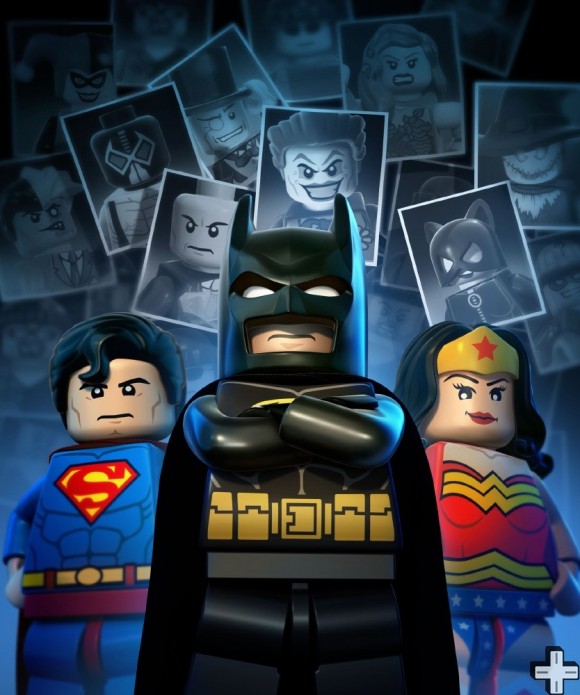
And boy, there are extras are a plenty in Lego Batman 2. There are the usual Golden and Red Bricks to unlock and a plethora of costumes, vehicles and characters to find, and to put it in perspective the main game only contributes approximately 20% of the game itself. It is straight forward enough to save Gotham City but there is a lot of replaying levels to gain everything there is to offer.
Backtracking and replaying the same levels can get monotonous at times but the rewards for doing so are worth it. Lets not forget that for trophy hunters this is a requirement to gain the all-important platinum trophy. As mentioned the main game makes up a small percentage of the game itself however do not let this fool you into thinking the game is short. Far from it as each one of the games fifteen levels is deceptively long. Each is broken into sections with checkpoints to save progress in case you need to stop playing for whatever reason. This means all the studs you collect will be safe.
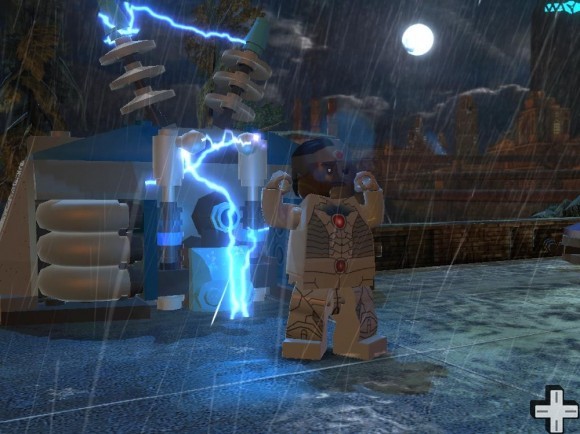
When being Batman and playing through the levels gets too much for you, you will be able to wonder through Gotham City as TT have managed to create a full city out of LEGO, which grows as each level is completed. It has sights such as Arkham Asylum and the Wayne Manor to enjoy and once fully unlocked is a jewel to enjoy by either land sea or air.
Like all of TT’s LEGO games, LEGO Batman 2 has a simple enough control scheme that is easy to pick up and master. However some niggles has managed to find their way onto the game such as the camera. For the majority of the game it is fine, however it is prone to getting stuck meaning the timing for jumps or lining up Batman to cross a bridge only to fall to his doom can happen. It does not happen often but when it does it is frustrating.
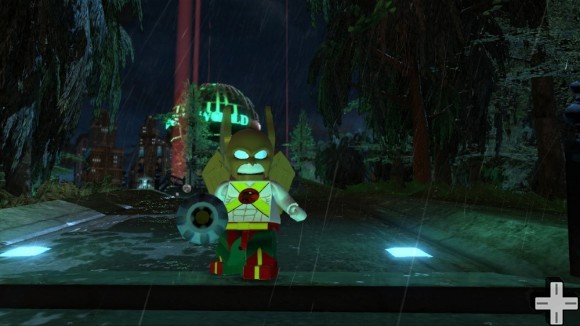
A few camera issues aside, LEGO Batman 2: DC Heroes is a brilliant edition to the ever growing LEGO franchise of video games, and managing to stick to the original formula of comedy, platforming and exploring a world of LEGO while keeping it fresh is no mean feat but TT Games have managed to pull it off by offering tweaks that enhance, not detract from the game. The voice acting works well and with over 250 collectables to find it will keep players going for a while. Veterans may get a little tired with the backtracking but sticking with Batman is a worth it just to drive around Gotham in the Batmobile alone.
Wheels of Destruction

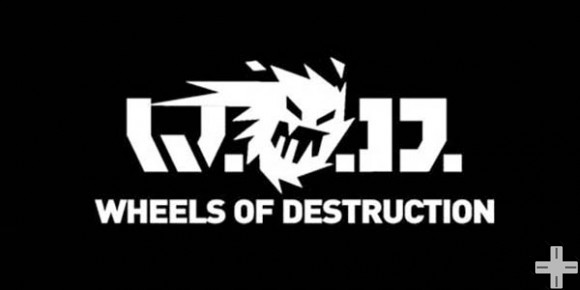
Every young boy when growing up would have at one stage wanted to drive a real life RC car they had growing up. Some may now have the money to do so. For the rest, the dream remains a dream. However, Gelid Games may not think so. Wheels of Destruction puts you in control of 5 different types of armoured vehicles and realises that once young boy-now a man’s dream and puts a big gun on top.
The aim of Wheels of Destruction is very simple as the title suggests. Make the other cars go boom in an exciting and explosive manner. The title has no story mode just a simple online or offline multiplayer for people to go and enjoy the fun. To do this, there are a number of weapons to get your teeth into. Each weapon of destruction comes with a primary and secondary function such as the standard Gatling gun: it comes with a rapid fire and a shotgun option that does more damage, but is slower to reload.
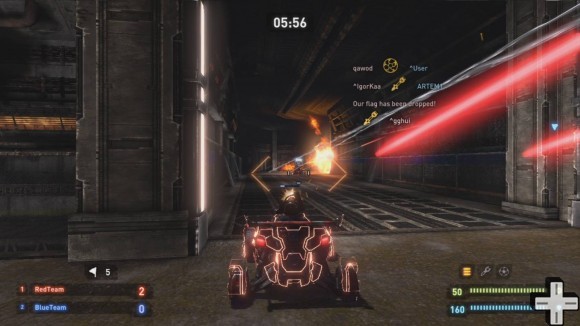
In Wheels of Destruction there are 5 types of weapons to choose from, which are collected on the field during play. As well as weapons, a plethora of items such as shields and repair items can be found. Navigating around the maps can take a while to get used to as there is no map system to see where opponents are or the layout ahead. This does give an added difficulty to the game however can be frustrating to find out who is hiding in the corner sniping you from a far.
Map issues aside, there are two modes to play: The death match and capture the flag. Death matches can either be played as a team or free-for-all, while flag capturing requires to be on a team. Each game can be selected with ease or if you are feeling frisky, random matches can be assigned. Both can be played on or offline, the latter is suggested to get to grips with the control system and find out which car is preferred.
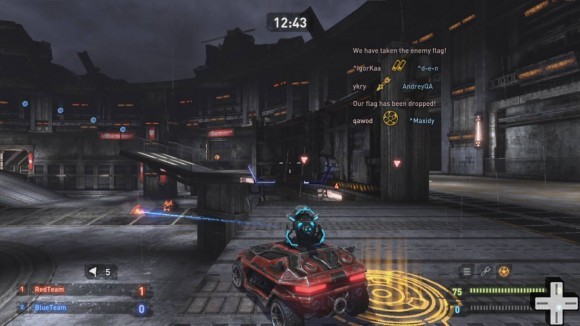
Choosing a vehicle depends on the style of play, from heavily armoured and slow, to light and nippy with more manoeuvrability each car has pros and cons. Sluggish cars tend to be more of a target, where as lighter cars explode more frequently. While annihilating players is the aim, the game also has a damage system that recognises where damage has been hit. If players or AI have been hit hard enough, that part of the car falls off hindering players, mainly with missing wheels.
To inflict damage can be tricky, as Wheels of Destruction doesn’t have the greatest control system in the world. In fact, it is the biggest downfall to the game. Accelerating and reversing are fine so long as they are done so in a straight line. The left stick steers the car and the right controls the camera angle, this gain is fine until trying to get out of a corner or turn around quickly. It takes time to get used and if perseverance is applied then it is a fun game.
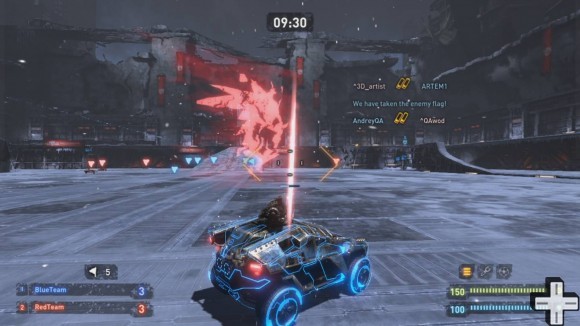
As an online multiplayer game, Wheels of Destruction takes story telling and throws it in the bin. It is a fun game, simple to start and easy to get into. The major downfall is the control system, and is too frustrating to be counterbalanced by all of its merits, it affects the game play in such away if you aren’t 100% used to it, the game is practically worthless. However, sticking with the game does give enjoyment, even if there isn’t much depth to it.
Yakuza: Dead Souls

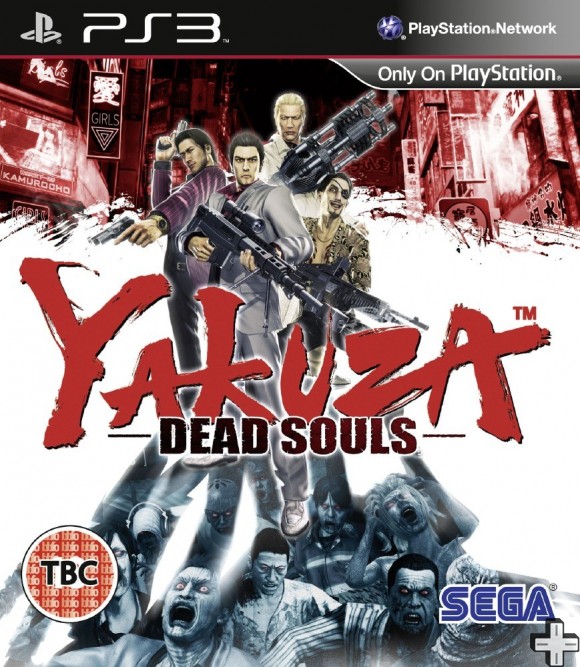
Japan, it seems, is forever getting attacked. First there was Godzilla, then there was Mothra, and now we have zombies. Oh but not only zombies, ladies and gentleman, in these tough times Japan is expected to deal with it’s organised crime families as well as a zombie horde! With this in mind SEGA has spawned PlayStation 3 exclusive undead-blaster, Yakuza: Dead Souls. The plot and feel of the game moves away from the norm for the Yakuza franchise while bringing back some familiar faces from previous games. The most notable change is the shift in mood from the usual gritty crime drama towards a horror / J-comedy style and which might have die-hard fans scratching their heads. The backgrounds of some well created characters are brushed under the carpet and players new to the franchise probably won’t even realise the characters have any previous histories to speak of, so brief are the introductions.
The plot conjures up some memorable moments, but is all too often put on the back burner in exchange for zombie killing mayhem, which is fair enough, but the character interactions you are given can be a little bland and are always somewhat surreal. The city of Kamurocho is split into two sections – the quarantine zone and the safe zone. The quarantine zone is where all the action happens: zombie-slaying, damsel-rescuing and all around hero-being (Ok, not my best, but you get the idea). The safe zone is the chirpy part of the city that carries on regardless and allows the player to roam the streets and access training areas, weapon stores and mini games. Interestingly, the quarantine zone expands as the story progresses, changing the landscape of the warzone and keeping players on their toes. It’s a nice idea and drives home that the game is set during a spreading epidemic – something often ignored within the zombie genre.
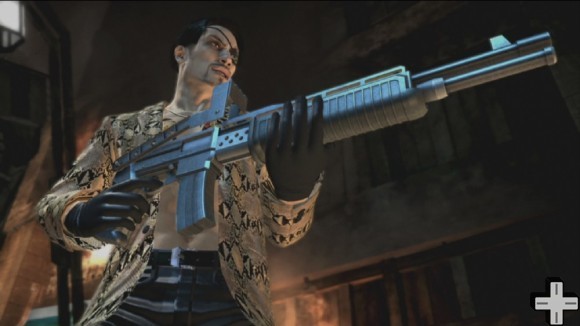
Yakuza is free-roaming in-so-much that you can go anywhere that isn’t currently under quarantine, but its city map feels cramped and a little bland and the combat areas are very linear. Little pieces of conversation flash into view as you pass people in the street, often giving clues about lucrative side-quests the character can take on as a break from the main game and it helps to give the city a more ‘lived-in’ feel and is certainly a fun way of accessing the subplot. On the whole though, the city isn’t overly convincing – think ‘No More Heroes less charismatic younger brother talking about his stamp collection’ and you’re getting close – nothing wrong with it, but rather dull. As if the hordes of undead weren’t trying hard enough to kill you, Yakuza’s camera gives it a good go too, always swinging to focus on where there character’s facing, making fighting retreats a near impossibility. It somehow manages to get worse in close quarters, where you’re greeted by a jolly symbol of a camera with a cross through, joyfully reminding you that once you’ve finished being eaten (because the camera spun and left you with no idea where the enemies were) that you can’t move it back because the scenery is in the way.
The only way to correct it is to run away in a blind panic until it wildly shoots back into its preferred home behind the character. Nice. There is an option in the menu that stabilises some of these camera issues, but not enough to make for a pleasant experience. The control system in Yakuza certainly doesn’t do it any favours either. Pressing L2 allows you to strafe, apparently ‘allowing you to keep your target in your sights while you move’ (yeah, right) and while L1 moves you into first-person aiming where you have to stand still. It might sound petty but it’s horribly easy to get these mixed up in the heat of combat and end up looking at the ceiling, all the while Mr. Zombie takes a big ol’ bite of his Player Burger. Mmmm, tasty. Sega also made the strange choice of having the player aim using the left analogue stick – something I don’t remember doing since the days of single-stick controllers – and let me remind you the reason we left it behind – it’s awful. This one can’t be changed either, so all your gamers’ instincts will be battling this one to the end.
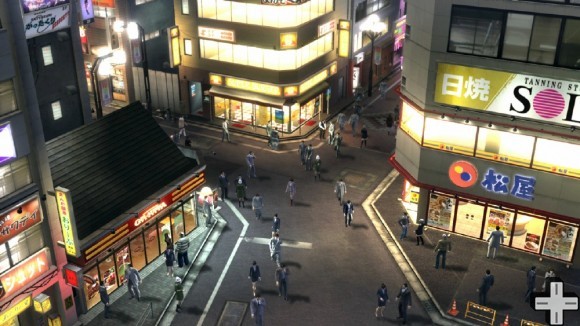
The action itself is a lot of fun to wade through though. Zombies come thick and fast with various other beasties introduced as you move through the game. Some of the monsters are ‘inspired by’ notable enemies in other zombie games *cough, Resi Evil Licker, cough* but there are enough home grown baddies to keep things interesting. A personal favourite are the ‘Cry Babies’, once-smoking hotties who had men falling about in their thrall, now able to summon wave after wave of gribblies until you kill them. See kids – fit women are evil. Fact. There’s a certain amount of repetition involved, mind you. Despite the fun of levelling up your favourite rifles and shotguns, ammo is often scarce, leaving the player no choice but to resort to the trusty pistol and its infinite ammo. The lowered damage leaves you hammering fire over and over again, watching a crowd of zombies thinning before a hellish boss shows up and you can almost hear your fingers begging for mercy.
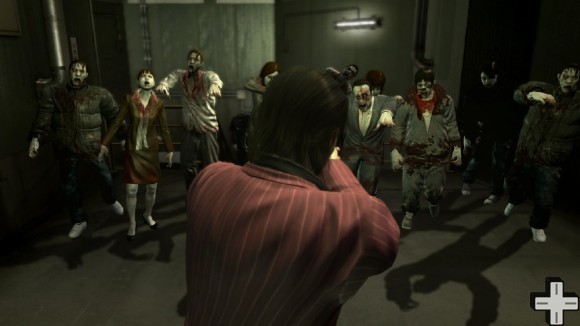
The horrible controls and tetchy camera do there best in spoiling what is all around an enjoyable arcade-shooter. Yakuza’s side quests keep the game interesting in between the endless button mashing and the weapon improvement system leaves the player with a definite sense of progression which are definite positive points. Unfortunately, lack-lustre characters, a decided lack of horror and pretty woeful load times take all the tension out of the game and leave you always expecting more. If this review was written in ‘teachers red pen’, it would likely simply read: “C+ Good try SEGA. Don’t try too much, too fast.”
Gotham City Impostors

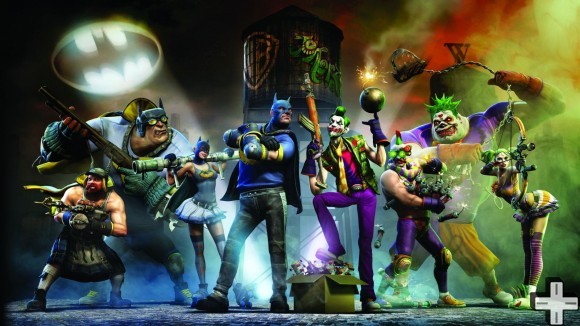
Batman has left town for reasons unbeknownst to anyone in Gotham – probably to visit Superman or Wonder Woman in another Justice League meeting. Coincidently the Joker has also vanished so crime rates have fallen 2,000% in the last week alone. Something has to be done. So picking up the work that the Joker has left behind in Gotham is a vigilante group known as “Jokerz.” Running around causing mayhem. To combat this is the tribute act to the caped crusader, “The Bats.” The sole reason for there existence is to protect Gotham in Batman’s absence.
The only problem with these vigilante groups is that they don’t have the technology, money and know-how to crime fight with the professionalism of Batman, or cause the meticulously planned and complex crime to lure the Bat into near death situations. Instead what the two teams do have are guns, homemade explosives, bear traps and roller skates. Unleashing hell in a tirade of bullets this is where Gotham City Impostors comes in.
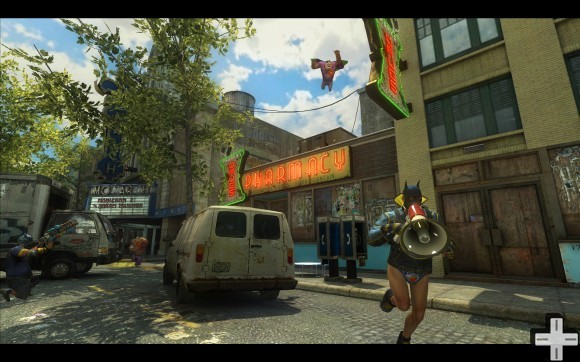
The premise of the game is simple – a first person online shooter where they only mission is to kick some ass. Gotham City Impostors has three modes of play, Team deathmatch, Fumigation and Psych Warfare. Deathmatch is as it sounds, Fumigation involves the teams trying to unleash team specific gasses to defeat their opponents by defending and fighting for gas machines. Finally we have Psych Warfare a mode in which players try and steal a battery for a rudimentary brainwashing device.
To go with the three main modes are the initiation section where players are introduced to the items they will be using such as capes to glide with, grapple guns which are just modified fishing rods able to support the weight of a 300 pound man (don’t ask how) and other such gadgets like the boomerang. Challenge mode is also present for gamers who which to earn experience and also get to know the maps.
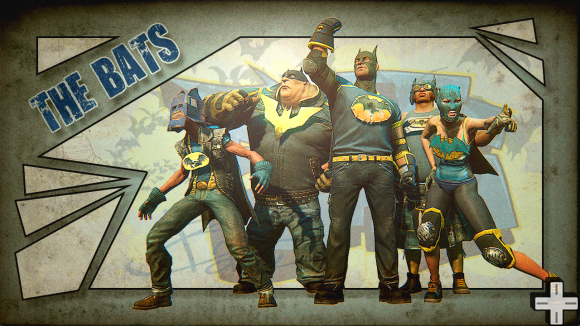
The maps in Gotham aren’t the biggest seen in any video game by any stretch of the imagination but because they are smaller and since the games are limited to a maximum of 8 on 8, then it makes for a fast paced action game. There are bright, colourful and outrageous landscapes that are easy to navigate. Bright costumes also make it hard to cower in the shadows. The only problem with the maps is that there isn’t enough of them and they can get tedious if they are constantly played.
With this niggle aside, Gotham City Impostors has a mountain of unlockable guns, upgrades and various other extras to earn as the character levels up. The trouble with this is when you start off, no matter how good a player is at first person shooters, if there has been no upgrades to any weapons then the chances of first time success are slim. This could put people off the game but as soon as level 5 is reached then fun can be had by all, the additions that can be opened up means a decent challenge to the older plays can be mounted.
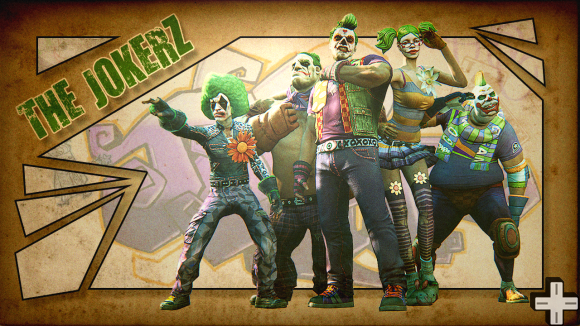
Weapons are used in exactly the same way as Call of Duty games, firing with the right shoulder buttons, and the snap aiming with the left. It feels instantly familiar and easy to use. Unlike Call of Duty, Gotham City Impostors doesn’t feel as tight and the aim isn’t as accurate. Not unlike COD games, there is a lot of smack talking from the characters, wise cracks and a lot of censored swearing adding to the hilarity of shooting someone in the head.
If a fun, hilarious and down right good time is to be had then Gotham City Impostors is the place to be. A lack of a single player campaign could be a problem for some as it literally throws you into the fray with little training. It does feel like a dirty love child between Batman and Call of Duty but it really works. Be warned, any gamer does have to suffer a battering before getting to grips with the game.
Under Siege

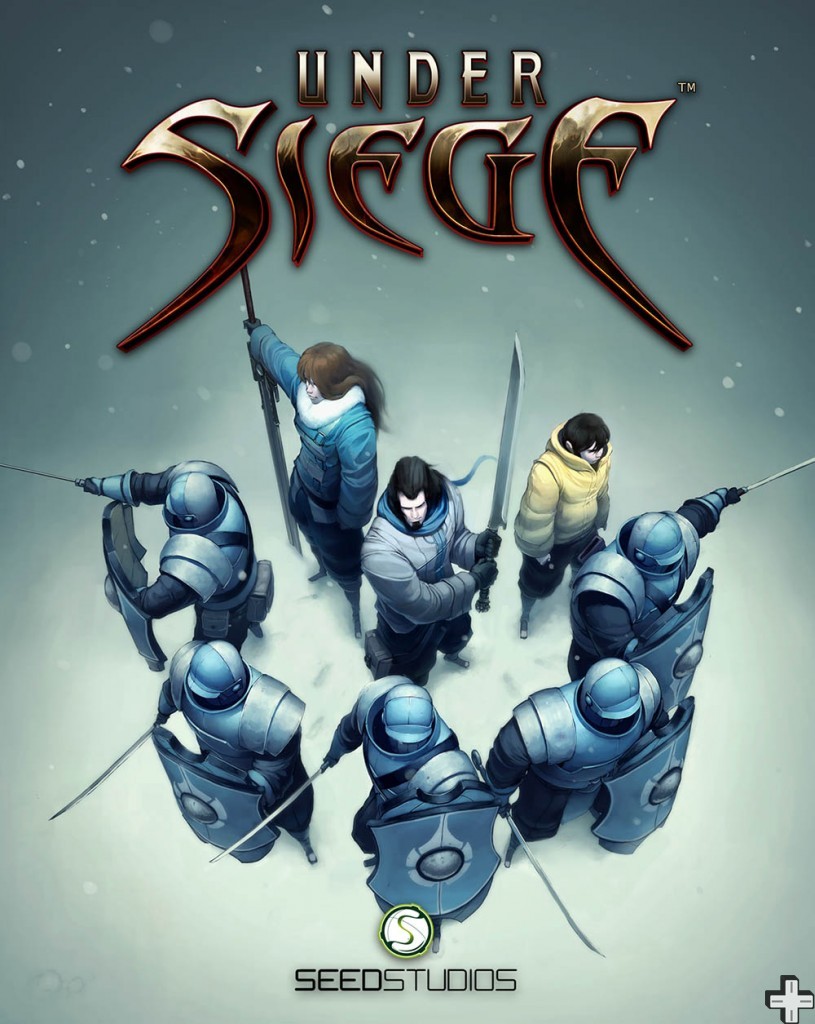
Always wanted to command an army of angry, tiny men as they march off to war, but never quite figured out how to apply for a North Korean passport? Ever played a zombie-infestation game and thought, ‘man, this game would rock so much harder with giant robots and frog men’? Ever figured that a game isn’t worth playing unless it was insanely difficult? If you answer ‘Yes’ to any of the above questions then PS3 exclusive RTS, Under Siege might just be for you.
(Disclaimer: to avoid player disappointment I am contractually obligated to state that the tiny men in Under Siege are NOT North Korean in origin, but they are angry and tiny enough to stand in as suitable replacements.)
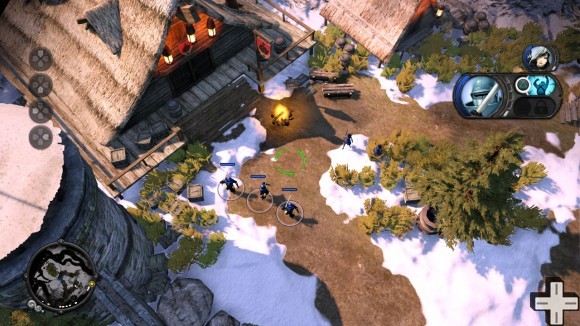
Under Siege is the very first offering from Portuguese developer Seed Studios, and in all honesty they’ve done a rather good job. An immediate comparison can be made to the Warcraft franchise, though Under Siege differs by using squad based combat. The player fights with small units of warriors that can be upgraded with experience points and bolstered should members be killed in action. These upgrades may only be made in a pre-battle stage and the player is forced to play through the level with whatever units he chose at the start, with no in battle resource management to speak of.
The games story consists of a civil war between two human factions, the oppressive rule of the Citadel and the downtrodden but skilful Resistance. Along the way a horde of robot-controlled zombies show up and wreck everything for everyone, including several other races around the world. Chapters are broken down into batches often very small, objective based levels – you know the drill – “Get there, pick that up, kill these guys, watch that cut scene, move to next stage, rinse and repeat.” It might sound a little dull but it really is a formula that works. The difficulty level on the other hand, even on the lowest rating, is nothing short of brutal.
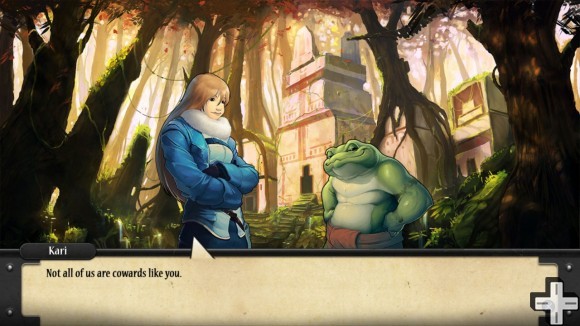
Like those ill-advised celebrity workout DVD’s, the levels in Under Siege are short, littered with bland dialogue and almost impossible to finish. Its learning curve is equally as painful, with the nicey-nicey intro levels giving way to relentless waves of murderous zombies by Chapter 2. Most players would agree that they want games to be a challenge, but Under Siege becomes rather frustrating with its level of difficulty, especially seeing as there are no waypoints and you can’t skip through the cutscenes should you have to restart.
One of Under Siege’s most noticeable assets is its control system. Enjoyment of RTS games on consoles is often limited by their clunky and restrictive controls, but Seed Studios have done a fantastic job in creating a simple and smooth system that utilises what the Dual Shock controller can offer. Players can create up to four shortcuts on the D-Pad that allow quick access to their most utilised units and a simple combination of buttons activates unit skills and abilities. Double tapping a shortcut moves the camera directly to the assigned unit to help the player navigate the battlefield and there’s even the ability to select the nearest unit in any given direction – helpful when you know where the action’s going down, but not who you have stationed nearby.
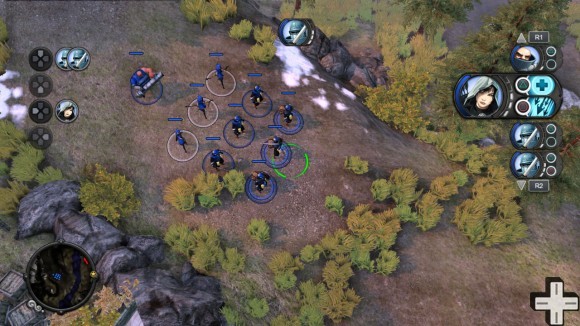
Each unit has a skill or ability that can be activated at the click of a button combination and will make your warriors a little more difficult to deal with; Soldiers can taunt enemies into fighting them, allowing your Archers to stay unharrassed, while the Archers can heal all friendly units around them and so on. When a unit levels up sufficiently they learn an additional skill and the key to winning your zombie-laden encounters lies in being able to use all your unit’s skills in harmony. While the skills bring an additional level of layer of complexity to the battles, the selection is a little poor and players might feel a little under-awed by the skills on offer a new unit becomes available.
Speaking of ‘new units’, the choices are few and far between as well, which comes as quite a disappointment. The opening cutscene alludes that the world of Under Siege offers a myriad of variety – frog men, gorilla shaman, zombies and robots! Your brain can’t help but race at the possibilities. Unfortunately though, despite the races being pretty original, there just aren’t enough different units at your disposal and the ones that you get aren’t varied enough in their uses. The problem partly stems from the ‘Rock-Paper-Scissors’ damage system that the game employs, and while it forces the player into some nice tactical decisions, it’s obvious what a limiting effect is has on unit design.
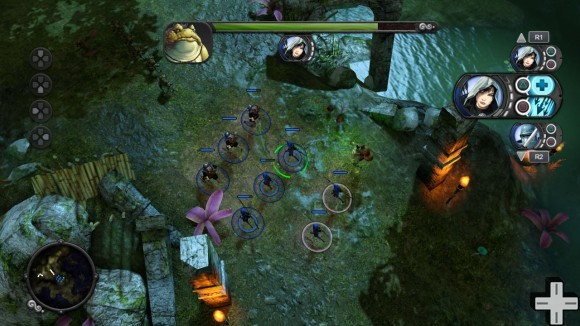
For more imaginative players, Under Siege’s experience reaches much further than its plot line, offering an in depth level editor. As you expect, editors have the option of creating levels using all the scenery and units seen throughout the game and divvying up the map between teams as they see fit. Unlike many editors however, Under Siege offers players the chance to create their own scripted sequences and trigger systems to create more than just multiplayer maps, but single player stories of their own. Seed Studios also made the rather brave decision to allow players to dissect the game’s single player levels and it’s truly a credit to them. It’s rare that a developer completely opens up their work to the paying public and this extra step really does allow players to create levels to the standard other gamers expect. If I were feeling bold, I might say that Under Siege’s editor has the chance to become the Little Big Planet of the Real Time Strategy genre, providing of course that enough people jump on board.
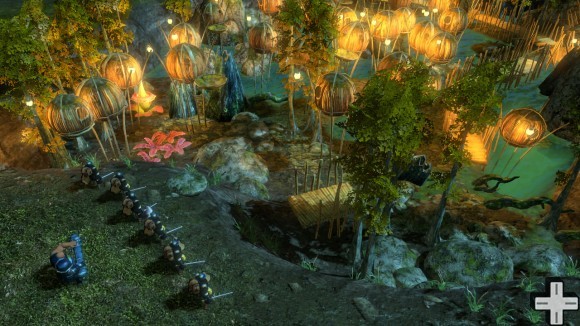
Under Siege really does offer an awful lot to shout about; attractive graphics, decent controls, weird and wonderful races and an editor easily on par with games made for three times as much. Unfortunately though its AI is so hardcore that it even beats itself, with a difficulty level akin to playing Scrabble with Stephen Fry – you hardly stand a chance from the start. Under Siege is definitely worth a go but might be limited to an audience of hardcore RTS fans with plenty of stars on their epaulettes or budding designers who see their names in lights and have enough time to kill to make it happen.
Dungeon Defenders

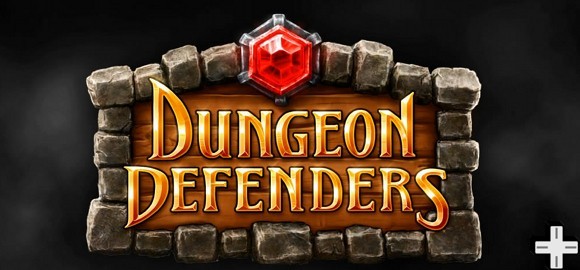
Like Marmite, Tower Defence style games are either loved or hated. The idea is simple – defend your most precious item from waves upon waves of enemies and win. Sounds easy right? Well with Dungeon Defenders, on paper it seems an easy enough premise but in reality strategic planning and team work are the keys to success, after all it’s not called Dungeon Defenders for nothing.
Tasked with protecting Eternia Crystals, there are four types of hero to choose from: Apprentice, Squire, Huntress or Monk. Each has there own specific moves, weapons and difficulty levels. Much like Pokemon, the Apprentice has the easiest start but weapons lack real power, where as the Monk has a tough start but is worth the pay off that he eventually gains.
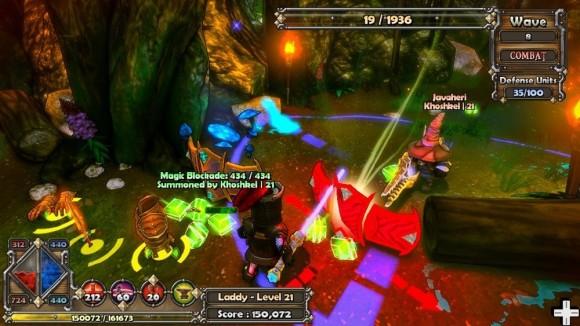
Dungeon Defenders isn’t just about tower defence, in fact it is much more of an RPG than anything else as there are a wealth of statistics that can be powered up. Just about everything in the game can be either levelled up through fighting off the waves of enemies or by having mana – the local currency, invested into them. Mana is also spent in the game building the tools that will keep dastardly enemies away from the Eternia Crystals. In turn, they can be upgraded and repaired during battles and again, depending on which character is chosen will depend on the types of weapons that can be built.
Whilst on the battlefield, there are two modes, combat and build. Build mode allows players time to navigate the map and plan where to put their defences. Strategy is key as there is a limit to how much can be built in any one stage so wise planning is the key to success and unlike other tower games, the maps gradually get harder and more Eternia Crystals appear. This means that defences are spread thinner and thinner so building a strong character as well as towers is vital as they can move around the map at will attacking enemies.
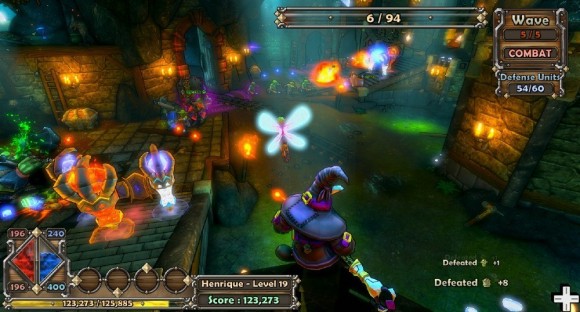
Movement in combat mode from the defence view is slow so it is always best to rely on the tools that have been created in the build mode. In Combat Mode, the enemies approach from different entry points and move to the Eternia Crystal from the word go. That is, unless a warrior stands in the way. The baddies range from goblins with clubs, to Elf archers and even the odd Orge or two. Like warriors, have different strengths and weaknesses to counteract the defences which have been lovingly created.
While hours upon hours can be spend making sure the chosen warrior is fully powered up to the maximum, if the right blockades aren’t used, all of that work can count for nothing as it will be taken apart in a matter of minutes. For this reason, Dungeon Defenders works better as a multiplayer game. Up to four warriors can team up to defeat the waves of creatures and with the different mix of abilities they each bring, they can ease the stress of the frustrating restarts experienced in the single player campaign.
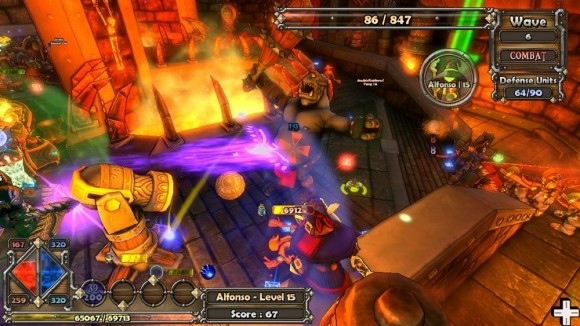
The single player campaign can be an irritating experience if defences are smashed within seconds however the responsibility for the failures relies solely on the player behind the warrior and not the game’s AI, so no matter what the level of anger is for losing Dungeon Defenders keeps you coming back for more. The developers – Trendy Entertainment have managed to create a game that taps into the human brain and pushes for perfection. It’s like being under the tutorship of Mr. Miyagi – he is there to make you do what you know you can. In the case of Dungeon Defenders that is to beat the game.
To do this, friends are needed to make this an easier experience. Warriors can manage on their own but it will take more time. While wandering around each map, it is hard to ignore the crafted cartoon graphics, which look semi cell shaded. They envelope the nature of the game and give it a moodier feel that perhaps a realistic game would have missed. The sounds of the game are of a loud and brash medieval time again mades the game just work.
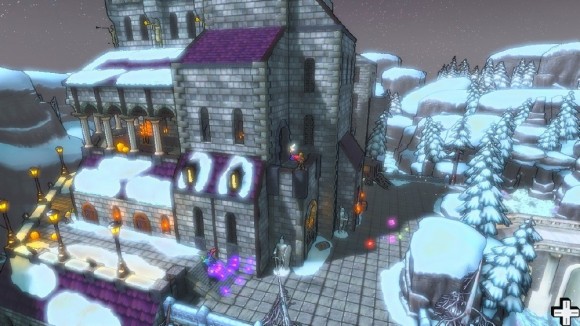
Dungeon Defenders has a lot of depth to a game that was released as a PlayStation Network game. From the statistics that can be upgraded through out the game, to weapons, armour and even pet animals. Throw in PlayStation Move features as a nice alternative to the traditional control system, a wealth of trophies and future downloadable content means that this game has a lot going for it. However the speed of the warriors and the sheer time that this game will sap out of you means that your only friends could well be the ones that help you through the game online. It is also essential to play through the game as each type of warrior to earn all of the trophies, but with little differences in the campaign mode this just becomes a dull repeat. Especially the 3rd or 4th time playing through.
Dungeon Defenders is worth the time and effort for the price paid. It is a fantastic change to other defence games out on the market and with so many customisable options, it is a game that will last for an absolute age. Granted there are a few slight niggles with the game but it is easily out weighed by the pro points. Anyone who likes Strategy based or RPG games will definitely enjoy this title. Everyone else should at least give it a go before purchasing.
Premier Manager 2012


Fancy yourself as the next Sir Alex Ferguson? Forget it – the man’s a legend. But if you choose not to heed my warnings and decide to give being the gaffer a whirl, maybe you should try your hand via Urbanscan’s newest football management sim, Premier Manager 2012 first, “just to see if you really like it”, as my mum would always say. The management simulator hasn’t exactly been setting the charts on fire in recent years, so can this latest signing give the genre a new lease of life on the PlayStation 3?
Not likely. Immediate impressions are that the franchise hasn’t moved very far since its launch on the Amiga way back in 1992 aside from a change of font and some modern borders. Of course, being a simulator, Premier Manager was never expected give you a lot to talk about visually and its various gameplay menus are certainly crisp and clean enough while not being anything to write home about. Described as the ‘pick-up-and-play’ management game, the format of the menus feels familiar from the get-go, with the ‘home’ menu very familiar to the main menu of the PlayStation 3, though some of the tabs are rather illogically placed and can leave you a little lost in those opening few hours. In honesty, the ‘pick-up-and-play’ moniker is likely only to apply to those players familiar with the series as a whole, with no tutorial or walk through to the menus; new players might feel like a fan trying to find their seat at Wembley Stadium without their ticket.
So, if the visuals didn’t leave you in awe, how about the soundtrack? Well, seeing as it consists of a single five minute track on loop, you’ll be ready to either hit the ‘mute’ button or the ‘off’ button rather swiftly. The sad truth is that the tedium of the music only helps to remind you that while you’re playing a game, you’re not really doing anything. The option to play your own playlists would have been a welcome addition and would certainly have helped to keep interest levels high(er), but that still wouldn’t be enough to magic sponge the knee of its sound issues.
Mind you, the gameplay itself has some RPG elements which, in the long run, work quite nicely. The ability to level up your coaching staff and stadium gives a decent amount of satisfaction and there are some transfers flying around that the leagues feel realistic enough. The task of buying a player is simple, should you know who you want to bring into your locker room, but then, so is the negotiation system. Players throw their arms in the air about what would be considered pittance in world football and with so few reactions on offer, there isn’t much in the way of excitement after your first few signings. The scouting system for players also feels largely redundant, leading you to put bids in for only those players you know and trust from your times on the terraces or as an armchair pundit.
There is a level of depth available to the tactical element that will keep die-hard football fans happy though. With an ability to tweak formations and tactics on a level more akin to PC-only titles, Premier Manager puts you in the thick of it. Unfortunately this tactical element of the game is largely confined to pre-match preparations, as changes implemented mid-game have a somewhat lack-lustre effect. Game day itself is a lesson in how to underwhelm your audience, with so little tactical feedback available to you from the match that making informed decisions is a shot in the dark. Whilst the length of time it takes for a match to play out is also longer than you would like, taking a few minutes even on the fastest setting.
You have to wonder about how good this simulator might feel had FIFA not taken such leaps and bounds in its own manager mode in the last few years, particularly with FIFA 12 bringing some juicy pieces of realism to the manager-player relationship. That said, the budgets of the two titles are hardly comparable and the results are as you’d expect – the minnows come out well on the bottom. But the final whistle is truly blown on Premier Manager when you consider its cost: a mighty £13.99 – about equal to the average weekly wage of a Macclesfield Town player, in case you’re wondering.
In the end Premier Manager 2012 feels a little Fernando Torres-like. You’ve paid all that money and might give it a run-out for a few minutes now and again, but everyone knows it’s likely to be relegated to bench and feel like a massive disappointment to everyone involved. Sorry ‘Nando, but someone had to say it.
Sonic Generations

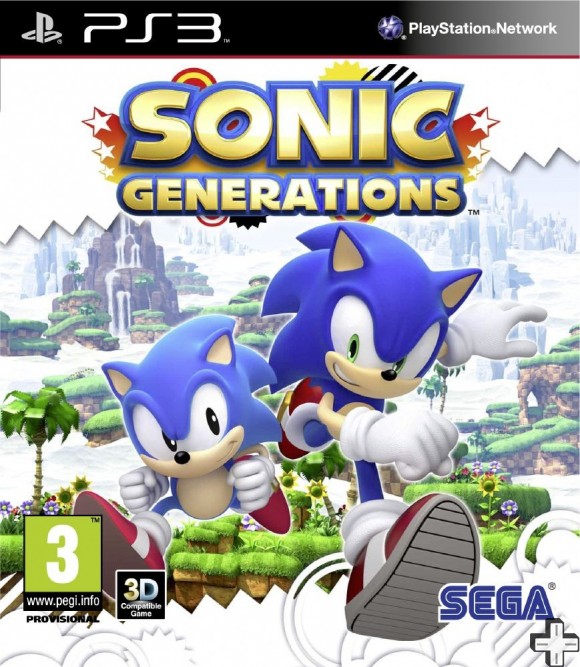
Anyone who has lived for more than 20 years will already have learned right from wrong, good from bad and Up, Down, Left, Right ABC Start brings up the level select. That’s right Sonic The Hedgehog has turned 20, and what better way to say happy birthday than it’s loving mother – Sonic Team & SEGA as the caring father producing Sonic Generations. A game showcasing Sonic’s happiest memories from the last 20 years and unlike the 15th birthday game, Sonic Team and SEGA mean business.
From the get-go, there is no opening cutscene or introduction. As soon as the start button is pushed over the new game option, Sonic starts. Green Hill Zone Act 1. Stunning visuals and that classic Green Hill Zone theme hit right between the eyes, and after a few milliseconds recovery it is time to finally press right and start enjoying what is in effect Sonic’s greatest hits. Except it is unfair to call Sonic Generations just a greatest hits. It is so much more than that. It is an evolution of the hedgehog over 20 years and in future years to come.
Sonic has always been about speed, speed and more speed. It is something that SEGA have lost focus with until recently. Sonic Adventure was more about exploring, Sonic The Hedgehog (2006) was more of a loading screen and I will not even go into Sonic And The Dark Knight. Sonic 4 Episode 1 was a “return to form” of sorts, however top speed took an age to reach and was often interrupted. Sonic Generations does not suffer any of these drawbacks. Sonic speed is reached quickly and isn’t disturbed very often. While there are times when Sonic will be going at a snails pace, they are thankfully infrequent and more reserved for the challenge levels.
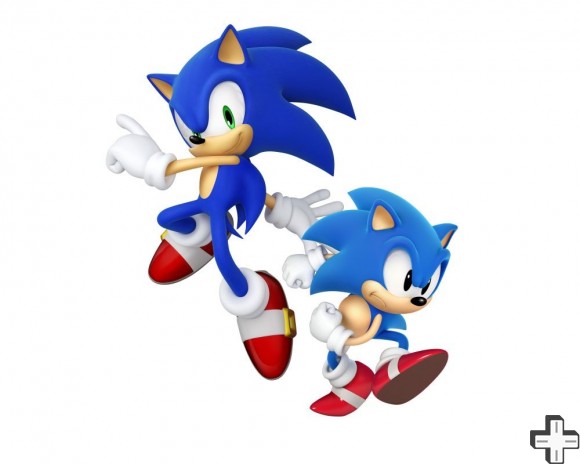
The levels are set out in the familiar two acts per zone format, Classic Sonic will handle Act 1 while Modern Sonic takes Act 2. It isn’t very accurate to say Act 1 is the 2D level and Act 2 is 3D because what SEGA have mixed them both together. Classic Sonic for instance will be running from left to right but occasionally will have to jump into the foreground or fall into the background to make progress.
SEGA’s biggest overhaul in the game has to be the modern twists. For one reason or another, Sonic has never really embraced the change from two dimensions. Next generation efforts have been clunky, slow and as buggy as a motel bed in New York. Falling through the levels and hitting invisible walls the most common complaints. Sonic Generations is again different. Playing through the City Escape level is finally a joyful experience, what it should have been when Sonic Adventure 2 was released on the Dreamcast all those years ago. Sonic does still get stuck occasionally but this minor gripe is nothing compared to the years of frustration endured by previous efforts.
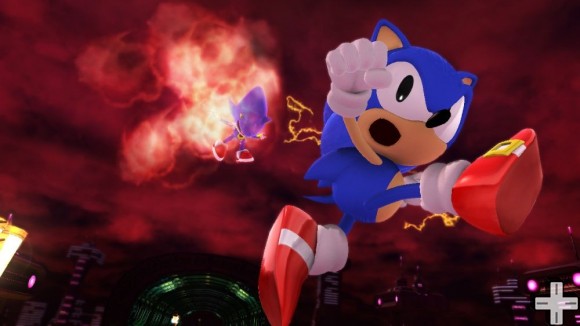
Frustration is felt in other ways. As well as the standard levels with Sonic Generations, there are also challenge levels. These need to be played through in order for new levels and bosses to be opened up. They vary from racing against a ghost version of yourself to battling enemies who have been upgraded. As all the levels in the game are ranked, the word challenge isn’t to be taken lightly. Trying to get top marks in some of the later levels will result in blisters on thumbs.
One thing that will let players down is the lack of special stages. Instead, chaos emeralds are awarded by searching out a Sonic clone (Metal Sonic, Shadow or Silver) or defeating a monster boss. For those who can count, that does mean there are only four bosses in the game and not one after every act like in the good ol’ Mega Drive days. However this does not mean Sonic Generations is by far a small game, not by a long way.
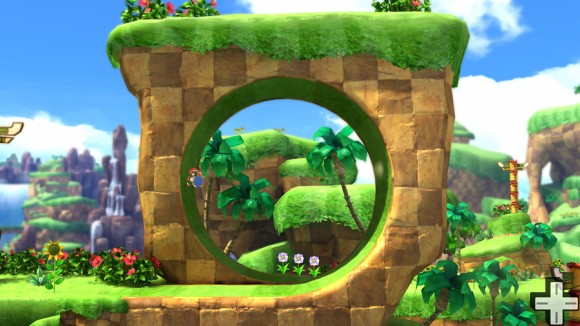
Sonic has a lot to collect from art work to music tracks to skills which can be used for things such as stopping on a pin head to even buying the original Sonic The Hedgehog. There are 120 plus levels in Sonic Generations and each one has at least one item to be collected from it so there is a lot to keep going with. On top of that is the inclusion of online time trails in which users from all around the world compete on leader boards to complete levels in the fastest possible times.It is a limited service, no ghost data can be shared but it is a good way of seeing who is the fastest hedgehog in the world!
While exploring and trying to collect everything right down to a Mega Drive controller, we are treated to remixes of classic Sonic melodies and even the odd foot tapping ditty of a new tune. For the most part it sounds great, there is only two or three songs which don’t match the level they are applied to. Sonic also has his friends visiting which normally would send people running for the earplugs, but after a substitution of voice actors they are considerably less suicide inducing than before.
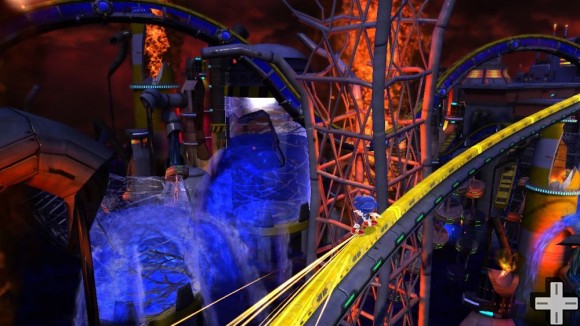
Sonic Generations proves that even after 20 years the blue mascot that once saved SEGA is still relevant and should not be subject to games that have been produced in the last few years. Sonic 4 Episode 1 and Sonic Colours have proved to fans that the Sonic team can make a good Sonic game. Generations is on an entirely different level. Fans of the Sonic series shouldn’t buy this because it’s a best of Sonic through the ages. Fans should buy this as it is a truly great Sonic game. There are a few set backs here and there but they are so few and far between.
There are a number of improvements to the game such as the voice acting actually being tolerable, however the greatest has to be the 3D mechanics of a “modern era” level. Sonic has come along way from Sonic Adventure on the Dreamcast. Sonic Generations is without a doubt the best outing Sonic has had in three dimensions. Possibly ever.
Rocketbirds: Hardboiled Chicken

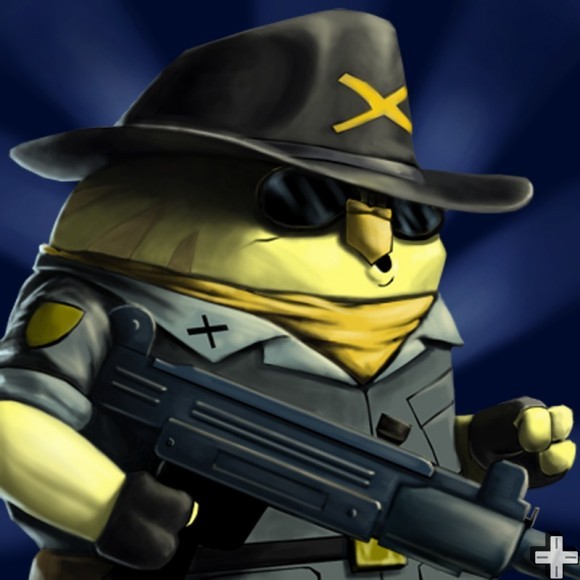
With revolution in the air, Ratloop Inc. felt it was time to let their own freedom fighter out of the coop, releasing Rocketbirds: Hardboiled Chicken on the PlayStation 3 earlier this month. At first glance this finger-licking, feathery shooter has a lot going for it: a unique style, quirky soundtrack and a hardcore chicken leading man who’s more Rambo than Nando’s. (Yep, you can bet the chicken references will be coming thick and fast, folks…)
Rocketbirds is a side-scrolling puzzle-shooter, with gameplay mechanics much in the same vein as games like Flashback and Oddworld: Abe’s Odyssey; titles still remembered with great fondness the world over. You play as Hardboiled Chicken, a one bird army who fights for the freedom of Albatropolis against the poultalitarian rule of the penguin emperor Putzki and his right wing man, Brno.
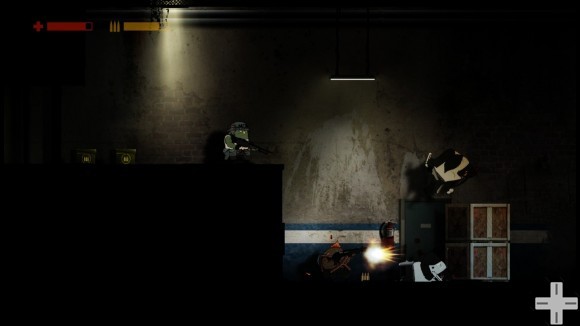
Immediate impressions of Rocketbirds are good indeed, with stylish graphics that grab your attention from the minute you press ‘Start’. Distinctive comic-book-style characters and immersive backgrounds permeate the game from start-to-finish to a quality often reserved only for headline titles. Each level has a very different feel and small details like lighting changes and propaganda posters litter them all, making each area a delight to play through. Defeating your enemies never gets old either, watching them explode in blusters of animated feathers and more cartoon blood than the Colonel has herbs and spices in his secret recipe. The action is also punctuated with often hilarious cut scenes, dragging you into the history of Hardboiled Chicken and his penguin nemeses with some wonderful fractured storytelling.
If the graphics of Rocketbirds don’t turn your head then the soundtrack surely will. From the opening theme song to individual level music, Ratloop Inc. have done a great job in using American psychedelic rock band, New World Revolution, to match the pace of the soundtrack to the games action. Portions of songs are used on repeat while Hardboiled battles it out with twenty or thirty penguin henchmen and you’ll quickly find yourself humming along without ever becoming annoyed by the bite-size clips on offer. The song Illuminate Me features heavily and is a perfectly used in explaining Hardboiled’s coloured past. The game also uses a nice mix of actual voice-acting and nonsensical jibber-jabber for character’s speech, allowing players to connect with pivotal characters like Hardboiled and Brno, while never worrying too much about the slaughtered masses of black and white minions.
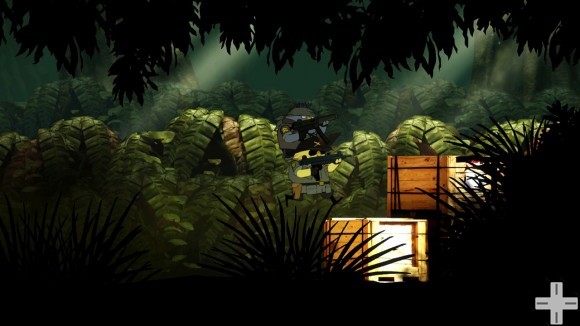
The simplicity of gameplay is a blessing and a curse to this fun title however, with point-and-fire shooting giving the game a great pick-up-and-play feel but limiting it somewhat in terms of variation. Different weapons are collected along the way, each with their own strengths, but with no upgradable features you’ll soon find yourself sticking to your latest pick up for the best results. Puzzles do seem to have a more variety meal style than gunplay, but they too become familiar all too soon. Hardboiled must collect key cards, push and stack boxes to allow access to new areas and regularly take control of dim-witted penguin soldiers, making them do his bidding through use of mind control grenades known as ‘Brain Bugs’ if he has any chance of overthrowing the penguin’s rule over Albatropolis.
Just when it feels that the simplicity of the puzzling and shooting might be getting a little old, Ratloop Inc. throw in what Hardboiled likes to call ‘jetpaction’. Taking to the skies in aerial battles, these are the levels from which Rocketbirds takes its name – jetpacking around in 360 degrees, evading bogey fire and blasting down enemies as if you were Maverick himself. The aerial levels make for a great change of pace to the standard side-scrolling fare and help to keep the action from becoming too repetitive. The skyward scenes come with their own drawbacks however, with little indication of where enemies are lurking within the sizeable sky, often leaving you hovering back and forth in search of opponents who are happily firing missiles at you from off screen. Aiming is also a little awkward when hurtling around on your jetpack, but in all honesty the fun of buzzing around and trying to keep your goose from being cooked keeps you almost too busy to notice. Almost.
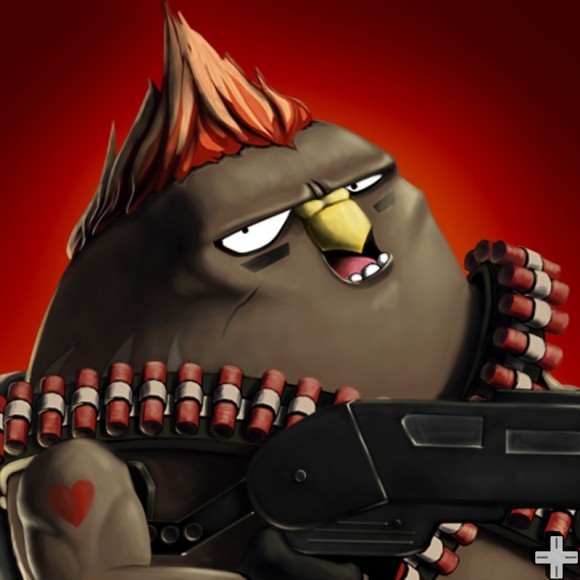
One quite literal sticking point with Rocketbirds though is its controls. The analogue sticks have never felt more sluggish than they do here and you sometimes feel like you’re dragging Hardboiled into action kicking and screaming rather than him willingly springing to attention. These control issues are counteracted somewhat in the jetpack scenes, with smooth 360 degree movement freeing you up for a little while before you become grounded in the mire once again. And as beautiful as the backgrounds are, it is sometimes awkward to discern foreground from background and you might spend ten minutes trying to jump onto a ledge that isn’t a ledge at all. That said, all of those ten minutes add up and without them the single player campaign would feel very short indeed, simple as many of the puzzles are.
A co-operative mode is available, though it adds to the longevity of the title only to a degree. Players choose from a list of smaller ‘Budgie’ characters, each solely equipped with a different weapon, and the pair must work together to overcome many of the obstacles that Hardboiled completes alone. Disappointingly, the level designs are merely tweaked to require the use of two players rather than one and the ‘Brain Bug’ puzzles are removed completely – a decision that proves costly in terms of enjoyment to be had here.
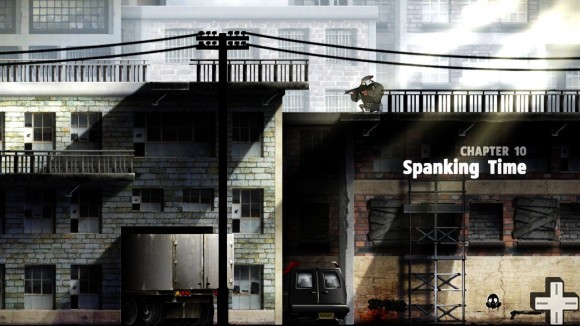
Rocketbirds harks back to days gone by; bringing the side-scrolling puzzle-shooter back to life with a fun plotline and truly inspiring graphics and musical score. Despite all this however, it never quite manages to live up to the promise of its aesthetics. The campaign mode is over just as you’re beginning to tuck in and while good fun, the co-operative mode doesn’t offer enough variation to lengthen the experience significantly. All-in-all, as delicious as Rocketbirds turns out to be, it definitely plays out as more of a snack box than a bargain bucket, costing £7.19 that might just be better spent elsewhere.


